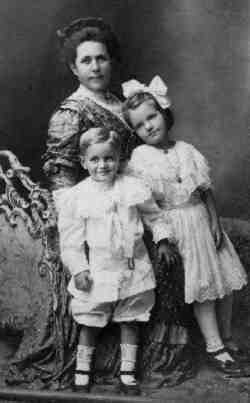
Figure 1.--Some tunics had fancy lace and ruffle trim. This little boy in a photograph taken about 1900 wears a sailor tunic with lace trim. Note the short socks and strap shoes. |

Tunics in the early 19th Century were quite uniform although there were considerable differerences in the neckline and collar. They were also worn with a wide variety of pants. Tunics declined in popularity in the mid-19th Century, but by the late 19th and early 20th Century they had again become very popular with for boys. They came in several distinctive styles. Fashion magazines at the turn of the century referred to this style as Russian blouse suits. HBC has used somewhat different terms distinguishing among the different types of blouce tunics. HBC has even noted one tuuic which appears to have been made with shorts rather than a skirted hem--rather like an early romper suit.
|
We note younger boys wearing many different styles of tunics. There appear to have been three different basic styles of blouse tunic suits: sailor, Russian, and Buster Brown blouse suits. The sailor style was especially popular for these tunic types. The style of the tunic was set almost entirely by the tunic itself and not by the pants worn woth it which were mostly covered. This is a little more complicated. Some tunics, for example, were done in the double breasted style, but these might fall into different categories, like the Buster Brown style. These suits at the time were referred to in different ways, futher complicating the task of organizing the different tunic suits into basic types. Of course tunic styling varied over time. The styles listed here are primaruly turn-of the-20th century styles. Tunics were worn throughout the 19th century, but we do not know enough about 19th century tunics yet to develop information on stylistic differences.
There appears to have been some gender differences in these tunics. Girls of all age might wear sailor tunics/blouse suits, but not usually tunics in the Russian or Buster Brown suits. Girls sailor tunics were quite similar to the boys suits, with minor differences. The girls' suits might not have such large or destinctive belts. The belts might also not have front buckles. They might more commonly have lace ruffles, although some boys' suits also have ruffles. Perhaps the most significant difference was that girls dud not generally wear bloomer knickers that extended below the knee.
The tunic outfits were acrtally suits as the pants that were worn with them usually made in the same color and in the same material as the tunic itself. Some of these outfits like Buster Brown suits were actually called suits. The pants were usually knicker length which bloused at the knee. Some were worn above the knee, but they were also worn below the knee as well. Some contemprary fashion writers referred to the pants worn with tunic suits as bloomers. The destinguishing feature og these pannts is that usually bloused at the leg with elastic hathering rather than having buttons or buckles like proper knickers. Some of the tunics may have been worn with kneepants, but the blocing effect was much more common. The tants were very plain, almost never with any notable detailing. I am not sure if they had pockets.
|
Several other garments were commonly worn with tunics, but were not part of a suit like the pants.
There was no cap or hat made especially for different styles of tunic suits. The most common headgear for boys wearing tunic suits were wide-brimmed sailor hats. While the styles of the hats were rather basic, they varied a good deal in the width of the brim. The combination of sailor hats and tunic suits appears to have been esebntially a coincidence. The most popular headwear for small boys at the turn of the century when tunic suits became popular was the wide-brimmed and other styles of sailor hats and caps. Thus they became the most common syule of headwar worn with tunics.
Boys in tunic suits wore mostly ankle socks or long stockings. Knee socks were not common. The long stockings were both white and colored. The ankle socks were mostly white, but colored socks were not unknown.
Boys wore a great variety of shoes and stockings, primarily depending on the formality of the activity involved. For the first time boys appeared in bare feat without giving the impression of poverty. Boys by the time that tunic suits became popular were no longer wearing heavy hightop shoes. Rather more comfortable oxfords or even sandals were more common. For dressy occasions boys might wear strap shoes. Tunic suits were one of the first outfits in which boys were photographed in bare feet. Boys in dress clothes always wore shoes in the 19th Century, usually with long stockings. These long wool stockings must have been uncomfortable during the summer. Many images after the turn of the century show younger boys in bare feat during the summer. In the past this was not acceptable in affluent families as it suggested that the family was too poor to afford shoes.
Navigate the Historic Boys' Clothing Tunic pages:
[Return to the Main tunic page]
[Historical trends]
[Stylistic features]
[National styles]
[]
[Tunic accessories]
[ Pantalettes]
[ Stockings]
[Fashion magazine--1903]
Navigate the Historic Boys' Clothing Web Site:
[Introduction]
[Activities]
[Biographies]
[Chronology]
[Clothing styles]
[Countries]
[Bibliographies]
[Contributions]
[FAQs]
[Glossaries]
[Satellite sites]
[Tools]
[Boys' Clothing Home]
